You read and we listened! Here is a list of what you say were my top blogs of 2016. If you missed any of them, you have another opportunity to check them out by clicking on the article titles, which will take you to those writings.
I always try to balance my articles between something that is empowering and something that is protecting. Interesting though, all the top 10 blogs actually involved license protection.
NUMBER 10: “You Can Get Another Job but You Can’t Get Another License”
This title is one of my favorite sayings and this article discusses how two long term employees sued their hospital regarding age discrimination.
I’m sure it was very difficult for these nurses, both emotionally and financially, to sue their employers. What we can take away from their case is to keep copies of ALL of employment evaluations including any time that you might have been written up.
I applaud these two nurses for speaking up against poor care in court.
NUMBER 9: “Is Your License Safe?”
This article discusses how an L.P.N. fraudulently upgraded her license to an R.N. by stealing another nurse’s identity. In Indiana, it is relatively easy to get such information on another nurse. To access your personal data online, or anyone to access your data, one needs only to provide your license number and the last 4 digits of your social security number. It would not take much effort for some nefarious person to access a nurse’s account and information.
I heard that this procedure will be changed but, yet, that revised protection for nurses in Indiana has not occurred yet.
NUMBER 8: “Having Missed Your Lunch Break”
This details a Houston lawsuit against an employer for not paying a nurse for lunch breaks during which she was forced to work.
The facility’s policy was for nurses to clock in only when they arrived and when their shift ended. The bookkeepers then deducted the ½-hour lunch break from their payable time. If your facility requires you take a lunch break and to ensure you will be paid, let your supervisor know, in writing, when you are not able to take that break.
However, it is even more important for nurses to take the breaks they need because, as health care providers, we are so busy taking care of everyone else that we don’t really take care of ourselves first. Our cup needs to be full in order to provide care for others.
NUMBER 7: “The Downside of Electronic Medical Records Documentation”
Tips and strategies are provided to protect yourself regarding electronic medical records because, as the adage goes, “if it isn’t documented, it is not done.” This also is a reminder that all charting can be tracked in an audit trail. So, if think you have removed something, it STILL can be found.
NUMBER 6: “Short Staffing in Nursing”
A topic near and concerning to all of us, this article discusses how nurses are placed between a rock and a hard place by being denied the right to refuse assignments. If one does refuse, that’s called “insubordination” and the nurse can lose their job as well as face a possible complaint of patient abandonment.
We’re hoping that through legislative efforts that safe staffing will be mandated in both acute and long-term care.
NUMBER 5: “Documentation Will Save You Every Time”
The article discusses a medical malpractice trial in which the patient’s family won because of lack of documentation. One of the best practices to protect yourself in such a situation is to review one of your charts 6 months from now to see what you can remember about that patient’s situation and ask yourself, “Did I document everything that could have been documented to show a clear picture of my patient?”
NUMBER 4: “Charting by Exception”
This is another writing about documentation that discusses how copying and pasting between pages can be very dangerous as you could just be recopying what your previous colleague did. There is something to putting pen to paper and thinking through the patient’s issues to document what you see, hear, touch and smell.
Also important is to make sure all your assessments are documented rather than just checking the boxes on the listing.
Ask yourself if your documentation tells the full story of the patient’s condition, professional assessment and care.
NUMBER 3: “Nurses with Criminal Issues”
This details how two nurse practitioners were criminally charged with 27 felony counts for prescribing phentermine, a schedule IV controlled substance, and phendimetrazine, a schedule III controlled substance, when there was an antiquated statute from the ‘70s, (before there was such a thing as nurse practitioners) saying that these medications could only be prescribed by a physician.
Unfortunately, although Kathy Lynch obtained a “not guilty” jury verdict and the case against Karen Dunning was dismissed, the Licensing Board still took action.
An update on this case revealed that following a lengthy hearing before the full Board of Nursing, Lynch’s advanced practice nurse prescriptive authority and registered nurse license were revoked. Dunning also went through an extensive hearing resulting in her advanced practice nurse prescriptive authority being revoked while her registered nurse was placed on indefinite suspension for at least 3 years.
Just because a criminal matter is resolved in your favor does not necessarily mean that the Nursing Board will not take action anyway. Clearly, they can act because violation of the Nurse Practice Act is different than violation of criminal laws.
NUMBER 2: “Injustices in Nursing”
This details how nurses, in order to participate in peer assistance programs, may need to be off all controlled substances if it’s an abstinence-based program. It also discusses how a nurse may be considered impaired if they are taking a controlled substance for something like chronic pain.
However, the most empowering part of the article is about how to create change.
- Create a petition on change.org;
- Talk to your legislators;
- Talk to your State’s Nurses Association.
These are only a couple of suggestions, but I do believe that nurses do have the answers to the problems in health care, but we need to work together to resolve these issues.
DRUM ROLL, PLEASE!
NUMBER 1: “Perils of Night Shift Nursing”
This quick easy read is about why nurses seem to get in trouble on night shifts and what they can do to avoid such problems and how to make the shift easier.
What’s so interesting in looking at these most-read blogs seems to be that they are ones related to actual cases brought by or against nurses and include practical information on how you can protect your license.
It also appears that many of you enjoyed sharing some of these articles, but did not necessary want to comment on them.
While I truly appreciate your sharing the articles, I also would love to hear your comments. Your valuable insight is reflected in what you have to say. So please keep commenting and sharing! I love to hear from you.
Thanks for being a valued reader. I look forward to continuing to provide you with very valuable information.







